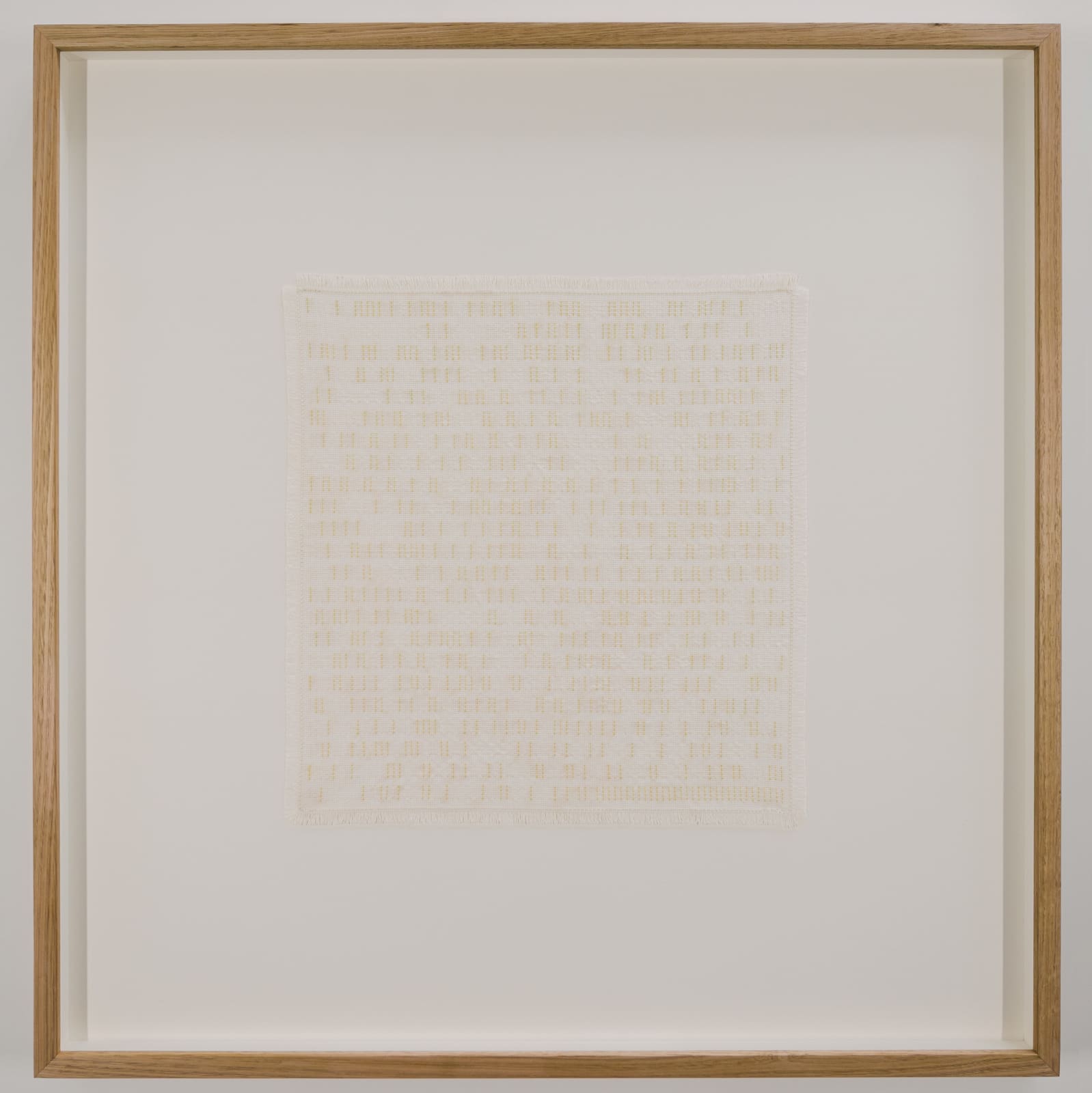
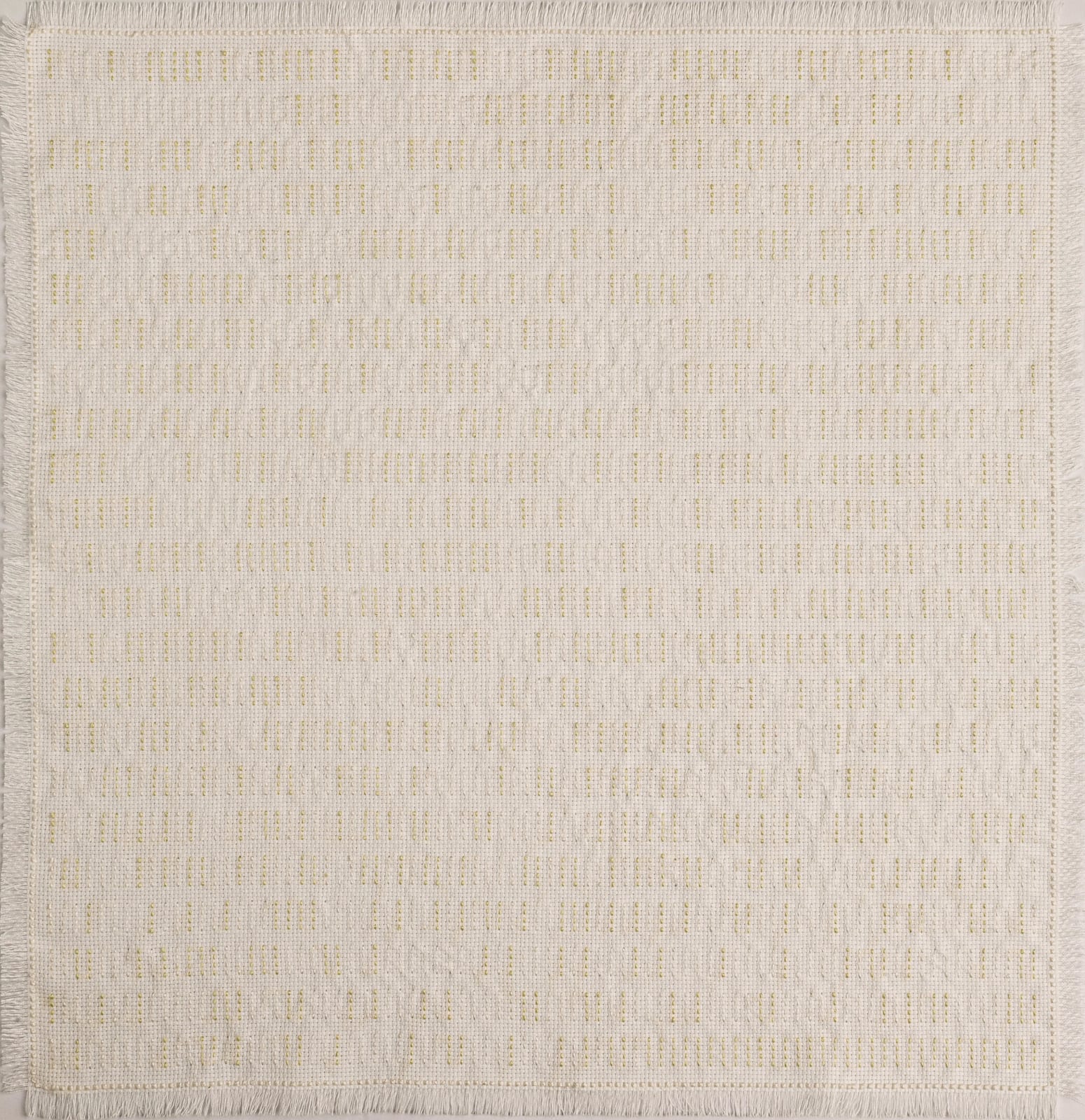
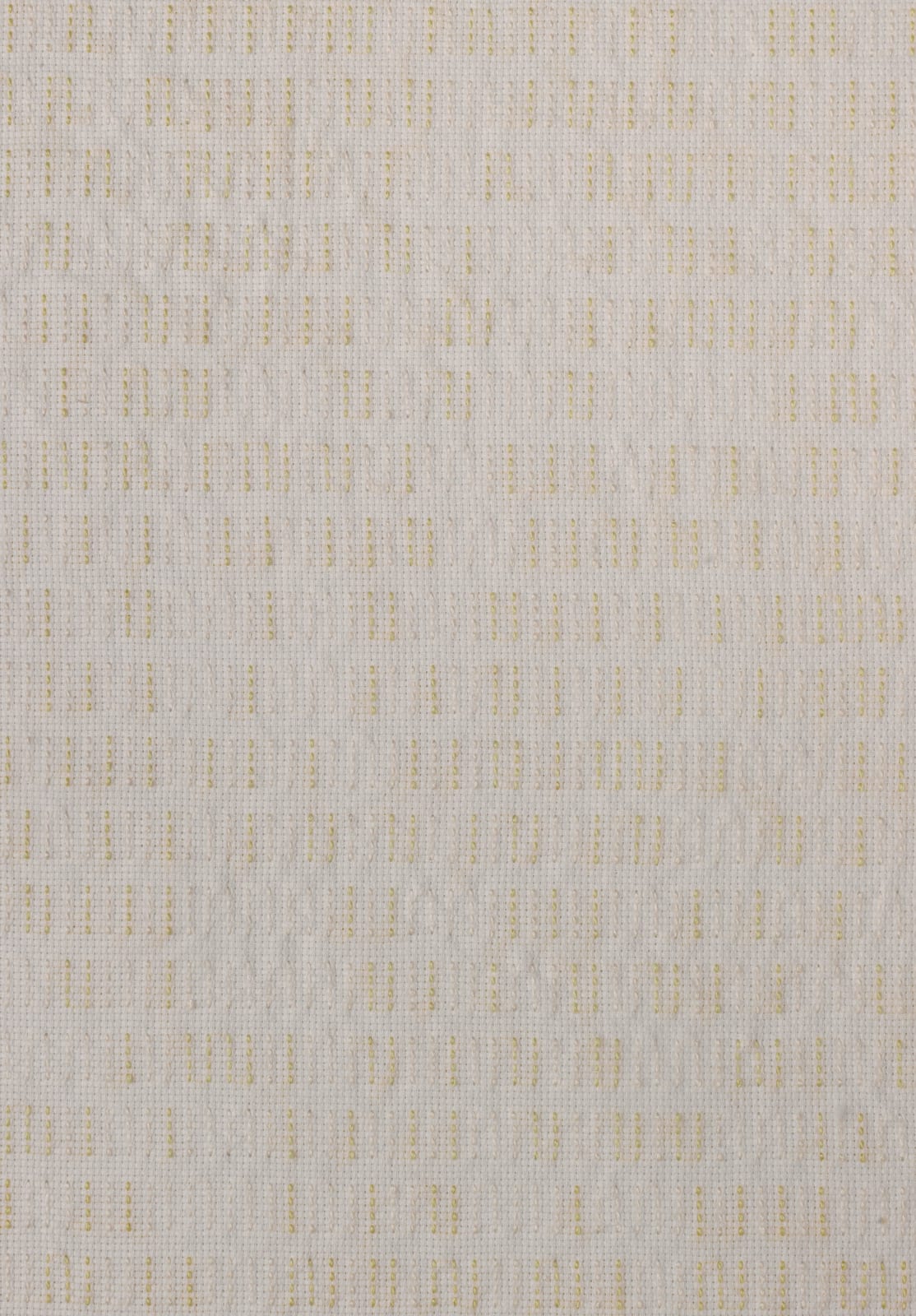
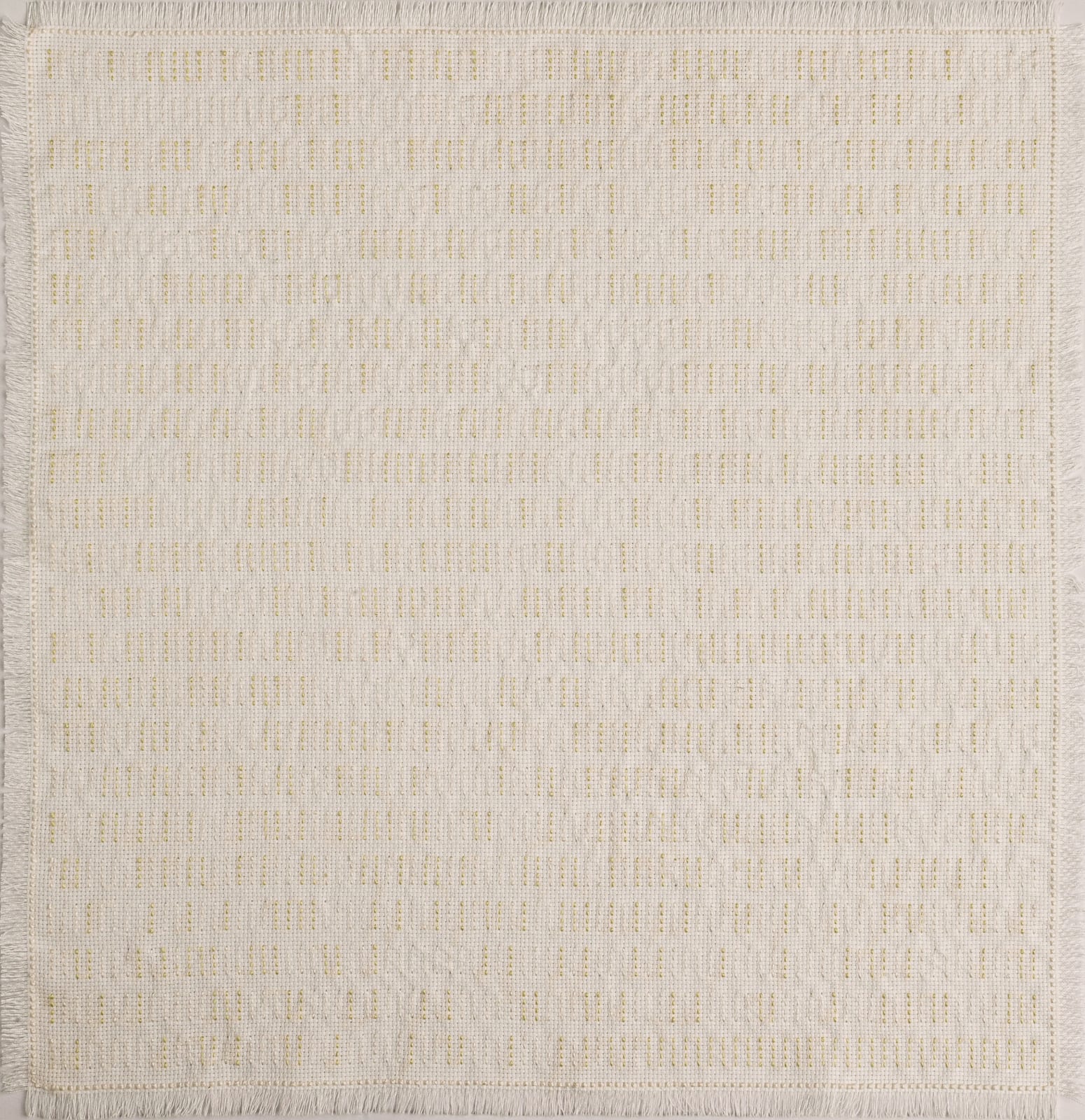
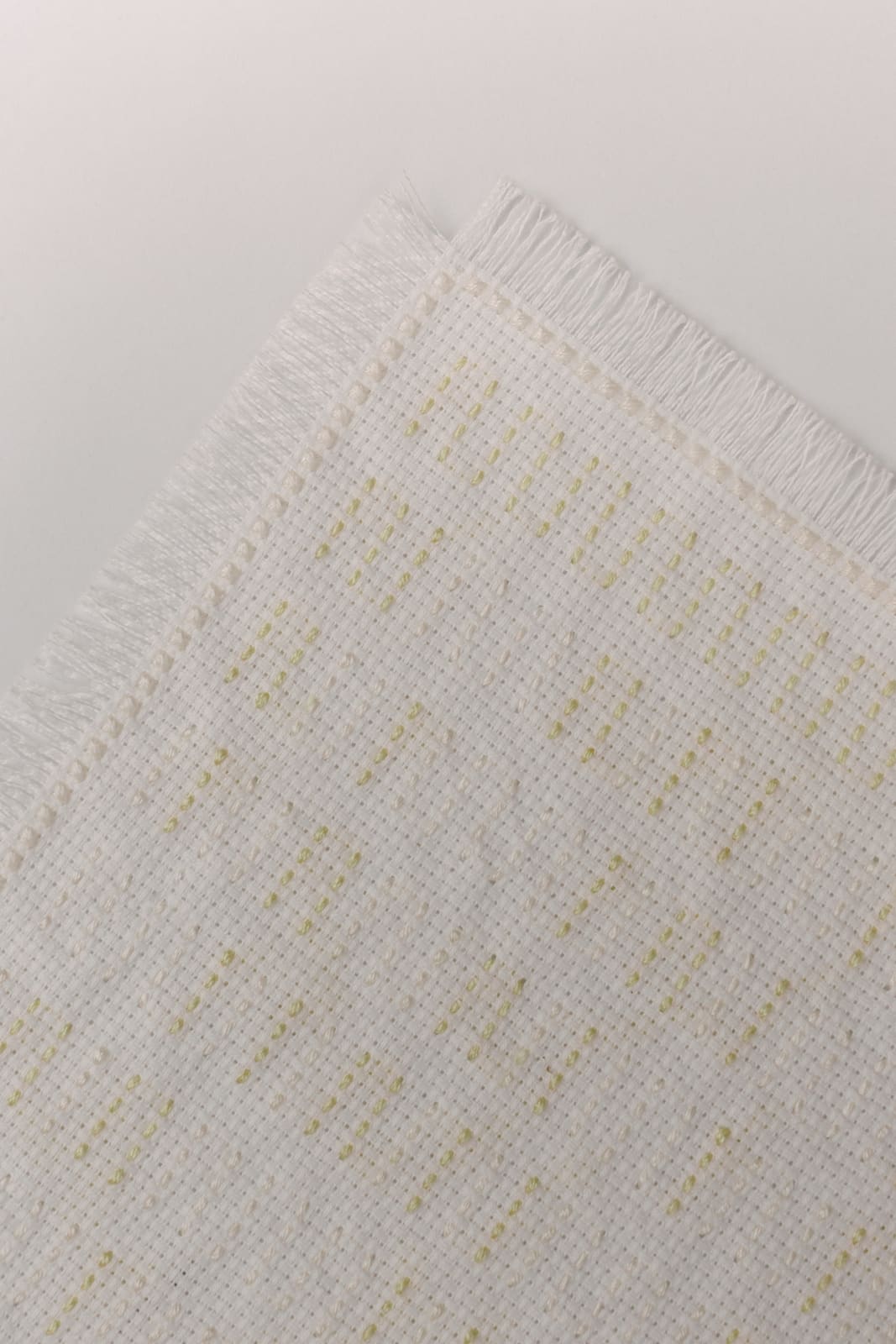
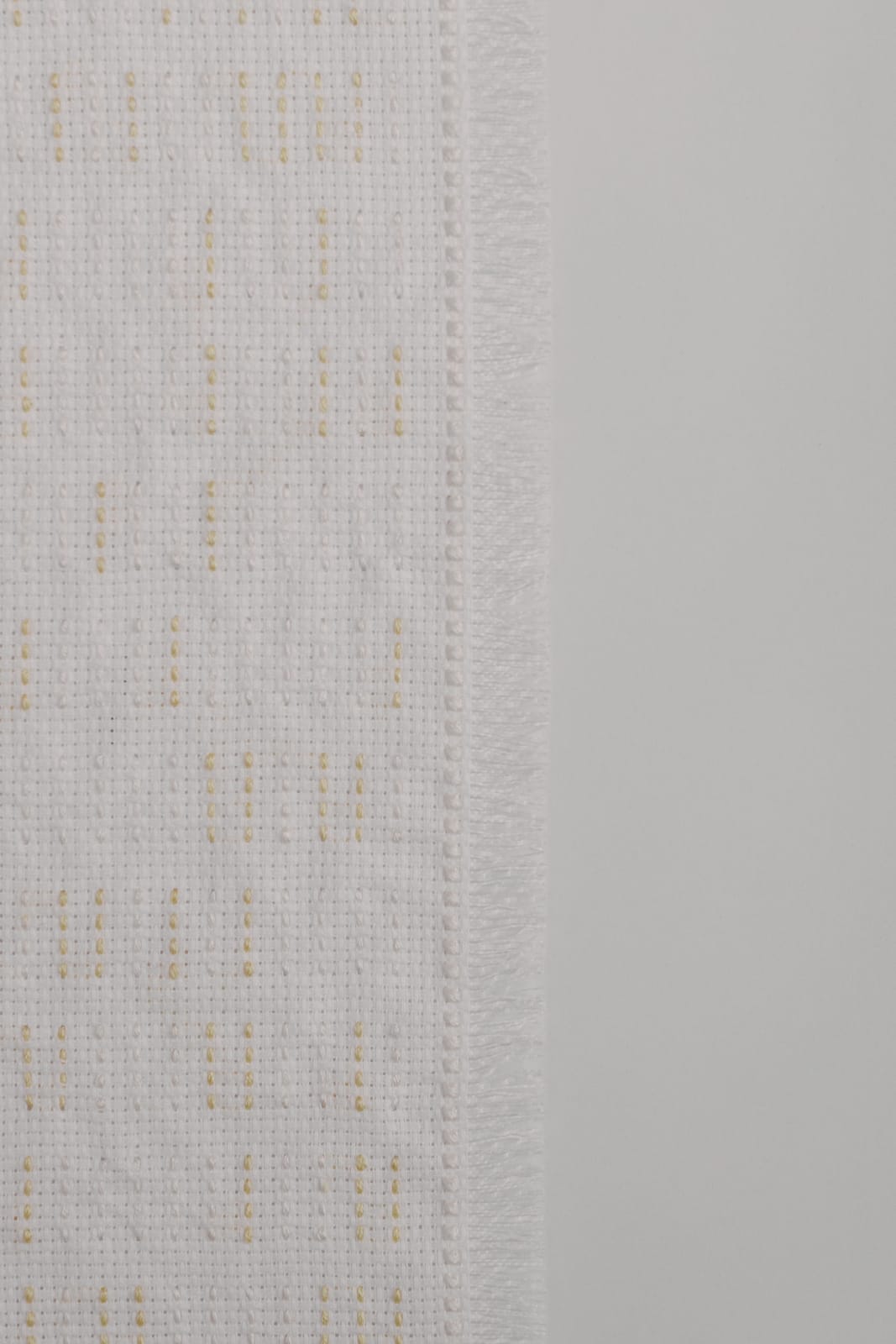
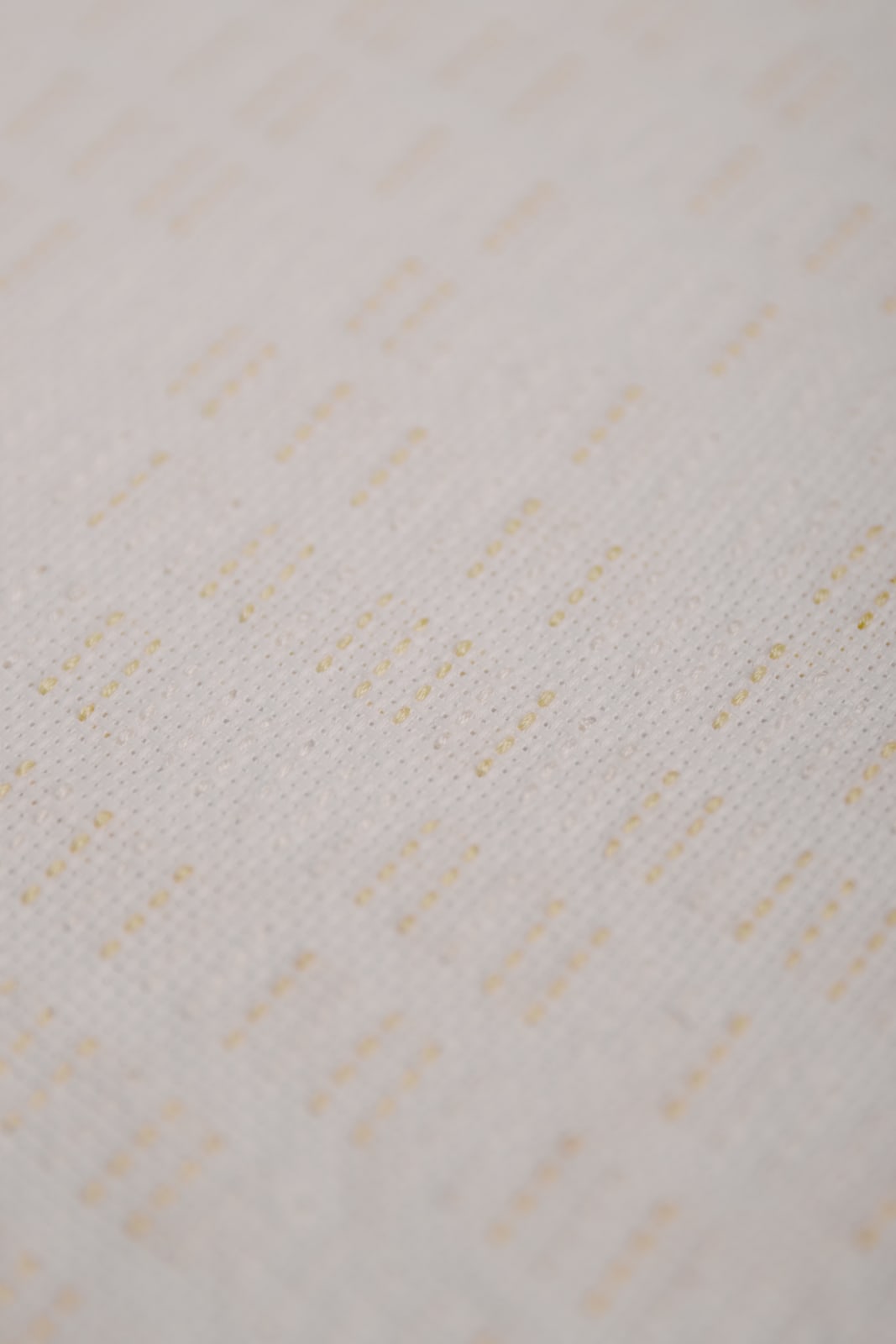
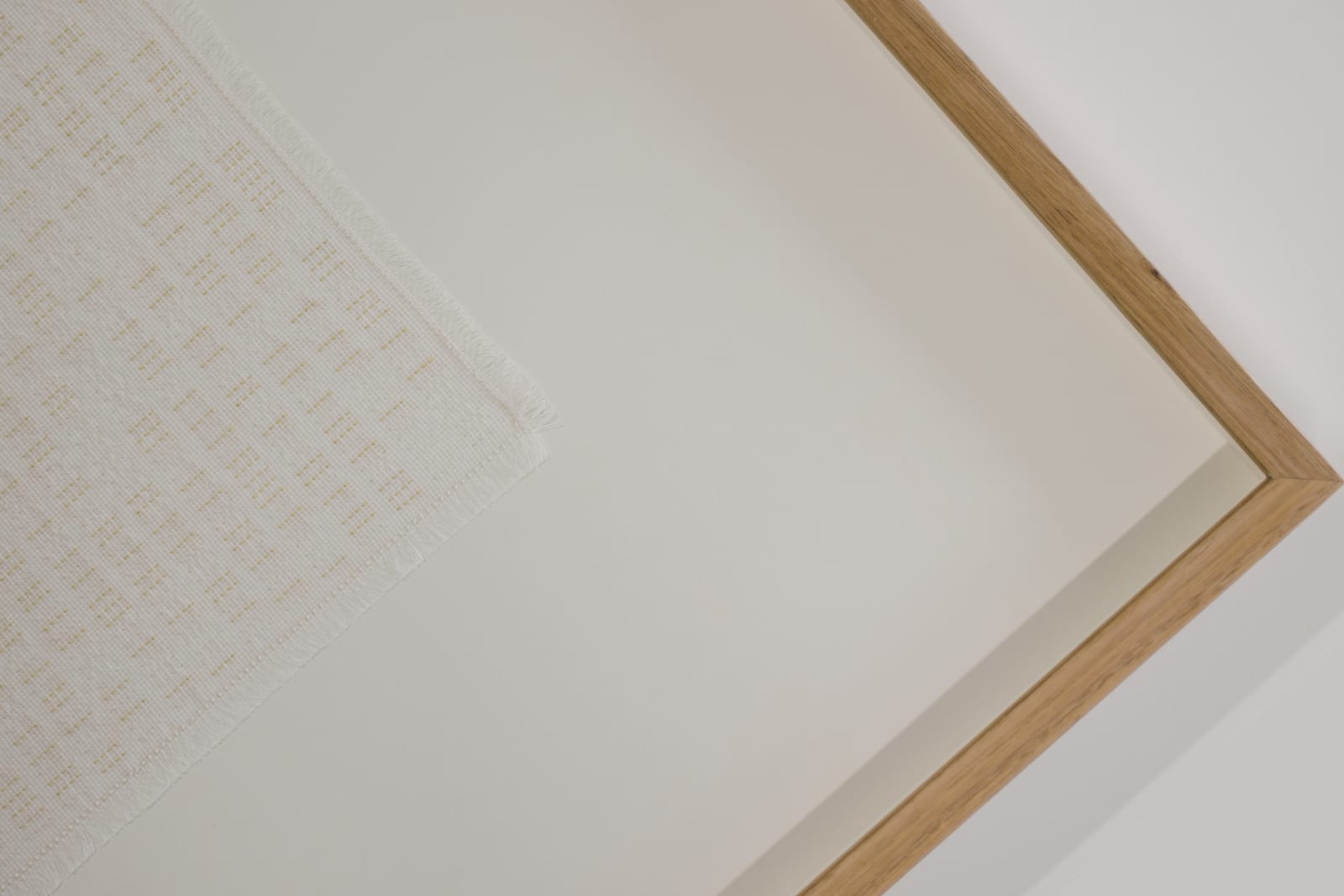
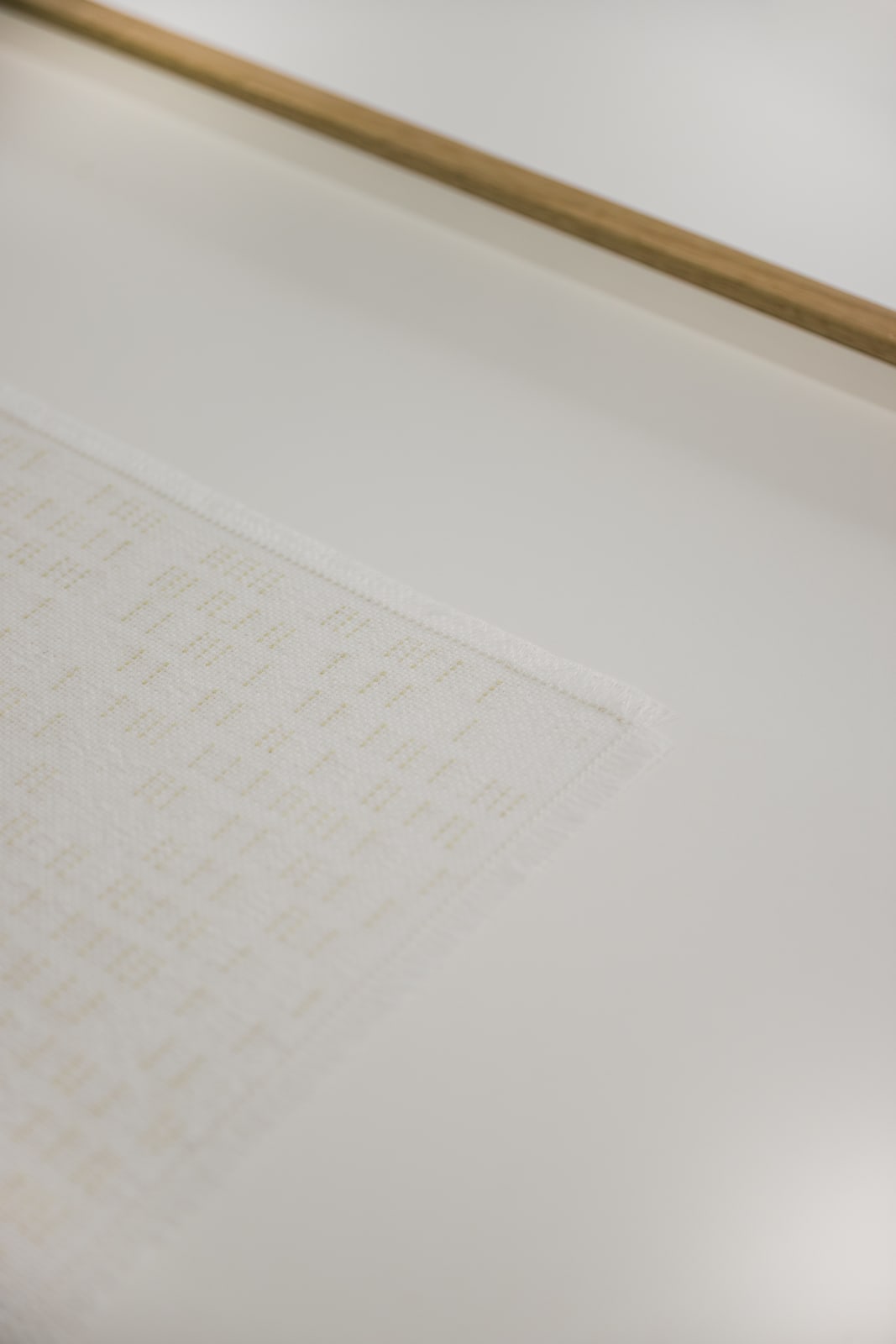
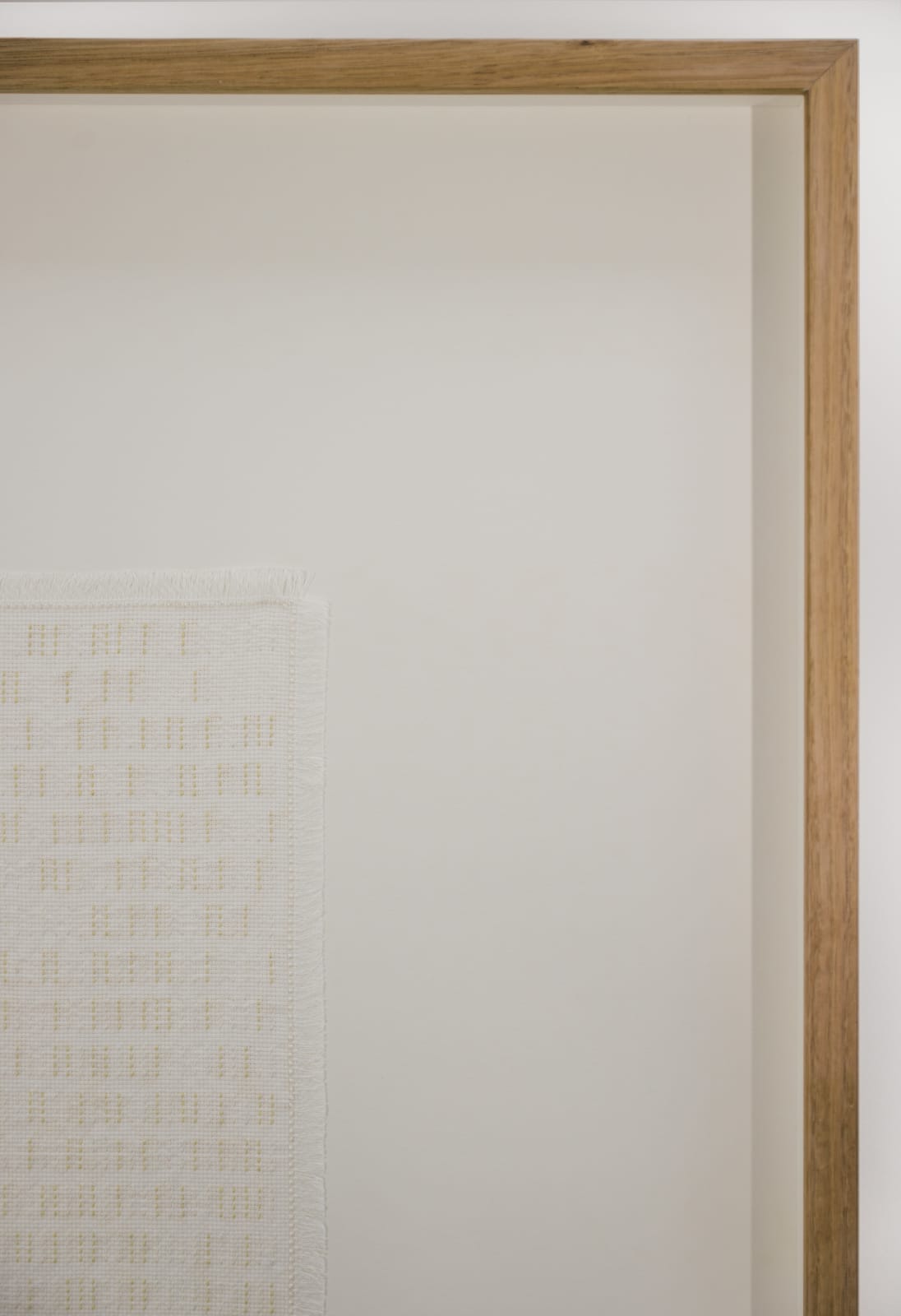

Mia Forrest
Wirrimbirra White (ed. 1/1), 2025
Hand embroidery, silk thread, cotton cloth, 2-channel stereo audio,Artwork attached to cotton rag matboard,
encased in a Tasmanian Oak Frame,
Ultra vue glass
Ordinal inscription, .jpg
Sat #: #1976480000000000
Ordinals Inscription, hosted by gamma:
https://gamma.io/inscription/df494a6b29dd59a5a1012ca2567f15eb18a35ac869ca2ddc88fcaeb11a
5a327ei0
Artworks from the Stitching as Storage series explore how textiles can store, index, and arrange ecological data in meaningful ways. Wirrimbirra White is composed of 7,360 hand embroidered stitches on a grid-based cotton cloth canvas. Embedded within the geometric abstraction is a cryptographic aleatoric notation derived from the rhythmic biodata of the white waratah (Wirrimbirra White), a rare colour variant of the iconic red waratah. Belonging to the ancient Proteaceae family, the waratah traces its lineage back over 90 million years to the Gondwanan supercontinent. A primordial bloom, it embodies wisdom and perseverance due to its existence within and throughout deep time.
The white waratah is seldom seen in the wild. Similarly, its presence in the embroidery is subtle, nearly imperceptible. The delicacy of the faint stitching invites the viewer into an intimate act of looking - one that echoes the flower's rarity, fragility, and quiet persistence. To retrieve the biodata of plants, sensors are directly attached to the plant to record the changes in electrical conductivity that transpire through the stomata: a direct channel between the plants’ internal autonomous systems and the conditions of the external world. Each significant change within the stomata is communicated to the sensor, initiating the recording process. This biodata is then sonified and notated as a rhythmic composition, where each embroidered line signifies the duration of an 1/8th note, encoding the waratah’s biological rhythms into geometric harmony. The stitches articulate a rule-based compositional procedure that notates the “beat” of the plant. The choice of stitching with two color values nods to the most basic form of computer code: base-2, wherein two binary values are utilized to constitute conversation, or in this case, rhythmic notation.
The artwork is inscribed as an Ordinal to Satoshi #1976480000000000 (Oct 8, 2024 9:43 PM, 2024), a satoshi that was mined on the day the waratah biodata was originally obtained
encased in a Tasmanian Oak Frame,
Ultra vue glass
Ordinal inscription, .jpg
Sat #: #1976480000000000
Ordinals Inscription, hosted by gamma:
https://gamma.io/inscription/df494a6b29dd59a5a1012ca2567f15eb18a35ac869ca2ddc88fcaeb11a
5a327ei0
Artworks from the Stitching as Storage series explore how textiles can store, index, and arrange ecological data in meaningful ways. Wirrimbirra White is composed of 7,360 hand embroidered stitches on a grid-based cotton cloth canvas. Embedded within the geometric abstraction is a cryptographic aleatoric notation derived from the rhythmic biodata of the white waratah (Wirrimbirra White), a rare colour variant of the iconic red waratah. Belonging to the ancient Proteaceae family, the waratah traces its lineage back over 90 million years to the Gondwanan supercontinent. A primordial bloom, it embodies wisdom and perseverance due to its existence within and throughout deep time.
The white waratah is seldom seen in the wild. Similarly, its presence in the embroidery is subtle, nearly imperceptible. The delicacy of the faint stitching invites the viewer into an intimate act of looking - one that echoes the flower's rarity, fragility, and quiet persistence. To retrieve the biodata of plants, sensors are directly attached to the plant to record the changes in electrical conductivity that transpire through the stomata: a direct channel between the plants’ internal autonomous systems and the conditions of the external world. Each significant change within the stomata is communicated to the sensor, initiating the recording process. This biodata is then sonified and notated as a rhythmic composition, where each embroidered line signifies the duration of an 1/8th note, encoding the waratah’s biological rhythms into geometric harmony. The stitches articulate a rule-based compositional procedure that notates the “beat” of the plant. The choice of stitching with two color values nods to the most basic form of computer code: base-2, wherein two binary values are utilized to constitute conversation, or in this case, rhythmic notation.
The artwork is inscribed as an Ordinal to Satoshi #1976480000000000 (Oct 8, 2024 9:43 PM, 2024), a satoshi that was mined on the day the waratah biodata was originally obtained
910mm x 930mm
Further images
-
(View a larger image of thumbnail 1
)

-
(View a larger image of thumbnail 2
)

-
(View a larger image of thumbnail 3
)

-
(View a larger image of thumbnail 4
)

-
(View a larger image of thumbnail 5
)

-
(View a larger image of thumbnail 6
)

-
(View a larger image of thumbnail 7
)

-
(View a larger image of thumbnail 8
)

-
(View a larger image of thumbnail 9
)

-
(View a larger image of thumbnail 10
)

-
(View a larger image of thumbnail 11
)

Keep up-to-date with our Programme.
Subscribe to our mailing list to get the latest news on upcoming exhibitions, collaborations and events.
* denotes required fields
We will process the personal data you have supplied in accordance with our privacy policy (available on request). You can unsubscribe or change your preferences at any time by clicking the link in our emails.
